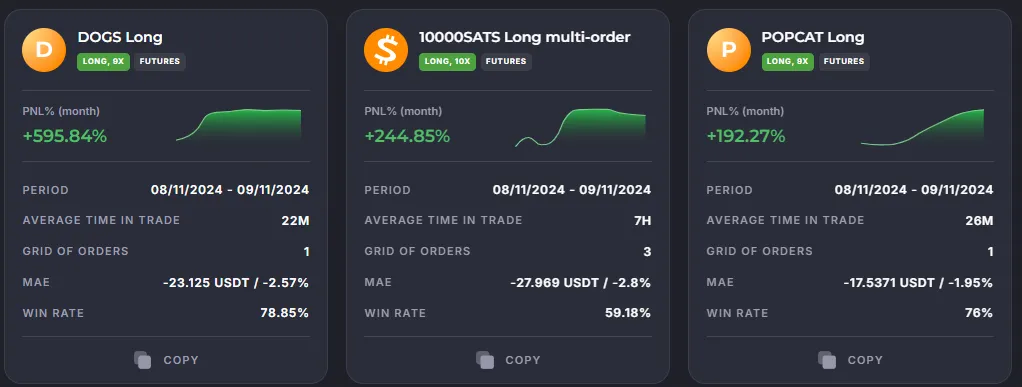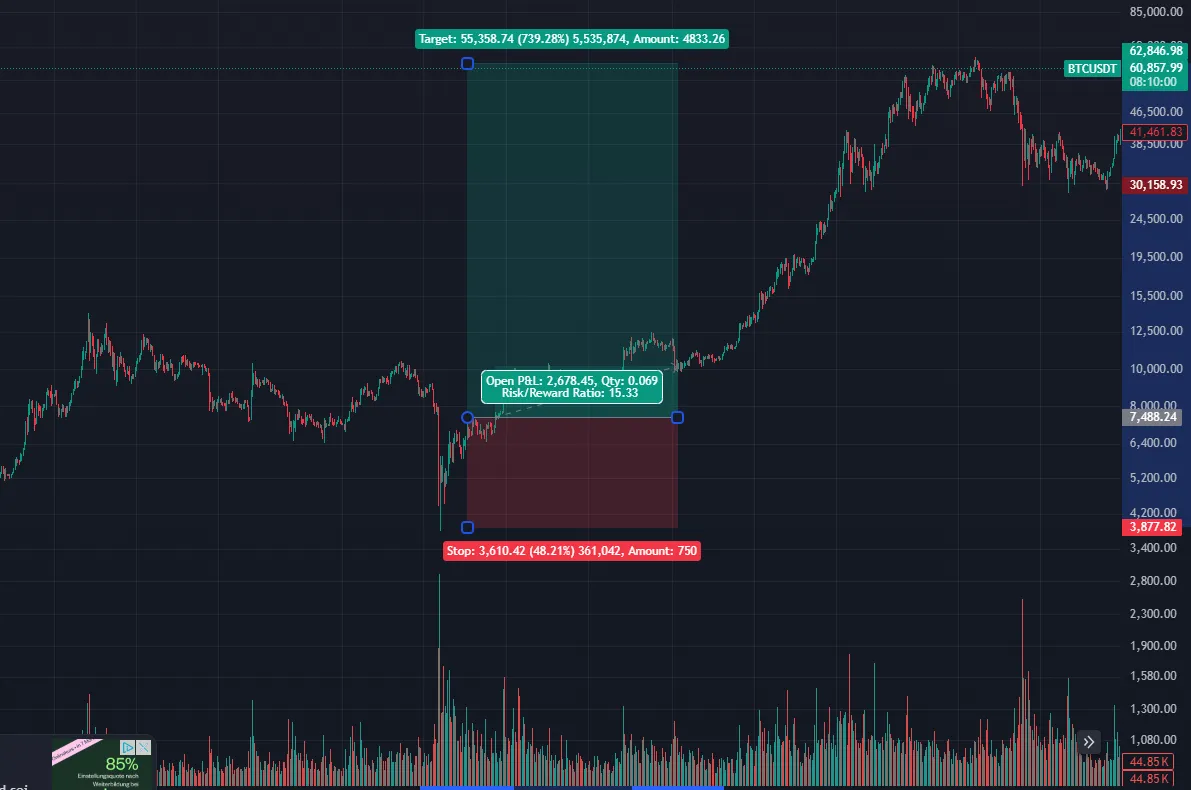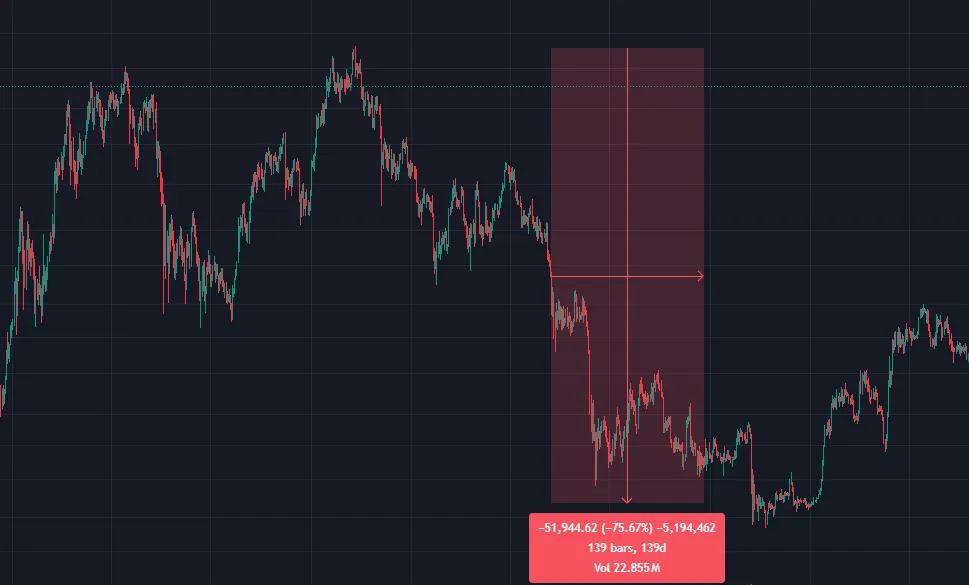
Bear and Bull Market - Understanding the Important
The similarities between downward (bearish) and upward (bullish) market movements are that they occur on increased volumes in assets.
The reason for these trends is that large participants (whales) have built up their positions and these funds need to be realized. When the whales have bought up all the demand or supply in the market, it is not difficult for them to do whatever they want with the price.
Trend - what it is and how to use it
A trend is a pronounced market movement in a particular direction.
Trends occur under several circumstances:
- Large participants have accumulated their positions, having bought out completely the positions of the opposite side. Then it is not difficult for them to start a price trend, the fuel for which will be stop-losses and liquidations at first, and after that - connection to the movement of other traders.
- The lead asset or the main cryptocurrency - Bitcoin has a clear trending movement and does not form a sideways price trend, breaking every breakout and going beyond its level. This bitcoin phenomenon is one of the main catalysts for a bullish or bearish altcoin market.
- Bitcoin’s dominance begins to fall or rise. The Bitcoin domination is one of the main indicators for understanding the market. If the dominance is actively falling, it is a signal of a bull market for altcoins, and if it is rising, it is a bear market.
Trading on a trend is much easier than trading in a global or local sidewall. The stop-loss of a position is always clear and there are no unnecessary thoughts about the choice of direction for trading.

In clear trend movements, trading indicators work much better than in sideways movements. The reason for this is the presence of volumes in assets, which satisfies the correctness of indicator calculations. The directional movement of the market is well suited for algorithmic trading Veles bots. It is enough to choose a suitable indicator for trading, calculate the stop loss, and the algorithm will rely on the mathematical formulas of the indicator and trade without the trader’s participation.

Bear market and bull market - what the term means
Bull market and its example
A bull market is a phenomenon when large participants have bought all the supply in the market and there is a strong imbalance between sellers and buyers. The price starts to be pushed upwards, fueling the growth with good news in the cryptocurrency segment.
These circumstances are characterized by strong price growth due to high speculative activity and an influx of new investors.
A bullish cryptocurrency market is often accompanied by a surge in speculative trading as traders try to capitalize on rising prices, as well as new large capitals attracted by the rising price.
All of this leads to an increase in overall market capitalization, which increases on a steady basis.
A perfect example of a bull market is the time when the first global lockdown occurred due to the newly emerged coronavirus. Bitcoin collapsed by almost 50% at the time the lockdown was announced.
The signal for a bull market was a sharp buyback of this drop, followed by a slight consolidation and a sharp further buyback of the asset.

Bitcoin’s upward movement in 2020
Bitcoin was followed by other coins, as it acts as a guide asset. The growth was hundreds and in some cases thousands of percent for fundamental altcoins and tens of thousands for other coins with little investment value. This event was a boom for cryptocurrencies. People were getting exponentially richer, and it was enough to just hit longs in the evening and lock in profits in the morning.
The reasons that gave the boom for the price rise:
- A sharp and strong payoff of a major drop
- Positive news background in cryptocurrencies amid general panic and inflation.
- Buyback after a drop on abnormally large volumes.
Bear market and its example
The bear market is similar to its opposite counterpart in almost everything except the direction of movement.
While in a bull market there was an oversupply of demand and therefore the asset was growing no matter what, a bear market, on the contrary, tells us about oversupply and falling demand, which is taken advantage of by large participants.
Trends come unexpectedly for retail traders. It is very difficult to predict their causes in the moment. They occur when big capitals make decisions, not when indicators tell us anything.
On the general euphoria of the market and endless profits, large participants begin to cover their positions by selling their assets to those who greedily and gratuitously buy them.
After all the demand has been satisfied and no one has seen any further growth, market participants begin to actively sell their assets. Someone starts to average their positions, someone just looks at their unprofitable positions and waits for a reversal. In general, there comes a mass panic and sales of those who believed in further price growth.
The culmination of the beginning of the event will be already negative news for cryptocurrencies or macroeconomics in general.

Bearish trend on the daily TF on BTC
For example, let’s take bitcoin’s subsequent two-year decline between mid-November 2021 and early January 2023 after a sideways phase that began after an active bullish trend. Since it is a guide asset, and altcoin charts on global timeframes look about the same.
The culmination and general official announcement of the bear market was the beginning of the military conflict between Russia and Ukraine. The correlation between bitcoin and this conflict is that the U.S. began heavily sponsoring Ukraine’s troops, causing inflation and further deterioration of the world’s leading economy.
The news was the catalyst for further decline, not the start of it. This is important to keep in mind, as the upside stopped and the decline began after the all-time high (overhigh) of $64,700 was updated and failed to consolidate above it on bitcoin’s daily chart.
The difference between a bullish trend and a bearish trend
Bullish trend:
- Cryptocurrency prices have been rising for a long time.
- Investors are confident in further growth and are actively buying crypto assets.
- The bull market is characterized by the optimistic mood of participants.
- Increased speculative activity, the influx of new investors.
- The market capitalization of cryptocurrencies demonstrates strong growth.
Bearish trend:
- Cryptocurrency prices have been declining for an extended period of time.
- Investors expect a further decline in rates and prefer to sell.
- The bear market is characterized by the pessimistic mood of participants.
- Decrease in speculative activity, outflow of investors from the market.
- The total market capitalization of the cryptocurrency market is falling.
What is the right way to trade in a bull market?
A bull market is characterized by overhighs of previous highs, as well as the almost complete absence of updating lows. Among other things, the volumes in the assets are consistently high and do not decrease.
In coins that on increased volumes well work out patterns of technical analysis, as well as trading indicators for long-signals.
Channel indicators such as Bolinger Bands or Keltner Channel are ideal.
With the help of Veles bots, you can customize the algorithm so that it will work in the breakdown of the boundaries of indicators and further fixation of the position on the trend.
A bullish trend is simple in that it is easy to recognize. After the breakdown of important levels that define the upward structure, you can consider that the upward movement is over, and change the trading strategy for other market realities.
How to trade a bearish trend?
Trading a bearish trend is completely opposite to a bullish trend in its logic.
If the bull market tells us about constant breaks of price highs (extrema), in a bear market there are systematic breaks.
Channel indicators can again help you take your profits from downward movements. Breakouts of indicator levels using the inverse filter with bots in the shorting algorithm will be able to take profits from a falling market over distance.
The most important thing in trading strategies with algorithms and indicators is a properly calculated risk management and clear adherence to it.
Bullish and bear market forecasts
Bull market:
1. Fundamental analysis
Evaluating the prospects of cryptocurrency projects and their opportunities
Analyzing upcoming updates, new products, partnerships
Evaluation of growth in the number of users, transactions, network activity
2. technical assessment
- Identification of uptrends, support and resistance
- Utilizing indicators that confirm the strength of the bull market
- Analyzing price patterns such as double bottoms, rising channels
3. cycle analysis
- Identifying recurring price cycles in the history of cryptocurrencies
- Expecting the next bull run according to the cycles
Bear market:
1. technical analysis
- Identifying clear downtrends, breakdowns of key levels
- Using indicators to identify market weakness
- Analyzing price patterns that confirm the bearish trend
2. risk factor assessment
- Identifying macroeconomic, regulatory or other risks
- Evaluating opportunities for short-term market liquidation
3. sentiment tracking
- Analyzing the prevalence of pessimistic investor expectations
- Assessing the level of fear, uncertainty and doubt in the market
Conclusion
The market is a repetitive phenomenon. The whole process of price movements on the distance can be compared to a fractal similarity, where there is nothing new, but only the big repeats after the small and vice versa - altcoins repeat after the fundamental altcoins, and those in turn repeat after bitcoin. This has been and will always be the case.
The correct risk assessment and accurate trading strategy, which can work on all trending trends, comes only with the proper knowledge and ability to be a disciplined trader.
Frequently Asked Questions
1. What is the difference between a bullish and bearish trend?
Besides the difference in the direction of movement, there is a difference in the philosophy of working out. You need to clearly understand what is happening in the market and why certain movements occur.
2. How can I work out trend movements?
With the help of Veles bots you can check its settings on the history of a year ago (Veles backtests) before launching the bot. Breakdowns of channel indicators are good, as well as breakdowns of price levels.
3. Can a bull in the stock market become a bear and vice versa?
Besides the fact that it is possible, it is also necessary. It is inherent in a successful and distance earning trader to fully adapt and adjust to market realities.